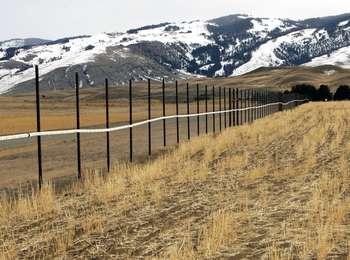Last updated: March 17, 2021
Place
Gardiner Basin

Historical/Interpretive Information/Exhibits
Park managers sometimes restore disturbed areas infested by invasive nonnative plants to native plants. The area enclosed by this sturdy fence was an irrigated field.
In 1932, President Hoover added more than 7,000 acres of land to Yellowstone National Park to provide low-elevation winter wildlife habitat near Gardiner, Montana. The addition included 700 acres of irrigated agricultural fields.
Park managers stopped irrigating the fields and planted an nonnative perennial grass that they hoped would tolerate the arid conditions and provide wildlife forage. It thrived for many decades, but was never suitable food for grazing wildlife. Eventually another more aggressive, nonnative plant moved in: an annual mustard, desert alyssum.
Managers expect the fencing to remain until at least 2018 while the native plants become established. The fencing prevents elk and other ungulates from grazing on the young plants.
Animals are Dangerous
- Do not approach or feed any animal.
- Bison and elk have injured people.
- Stay 100 yards (91 m) from bears and wolves.
- Stay 25 yards (23 m) from all other animals.
You are responsible for your safety.
Think Safety, Act Safely. Yellowstone is a Dangerous Place.
